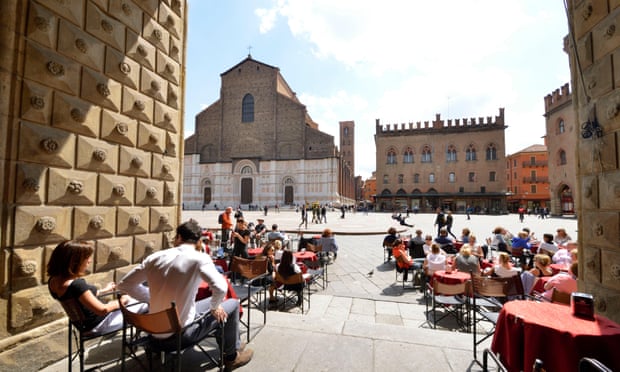
Padua, Italy
Padua is full of fascinating places to see. Saint Anthony’s Basilica, with a magnificent silver sarcophagus housing the saint’s body, easily rivals Saint Peter’s in Rome. The nearby botanical gardens, filled with plants and flowers, are a delightful way to pass a few hours. In the morning, hit Piazza della Frutta and Piazza delle Erbe, for buzzy markets selling everything from strawberries to sneakers, or pop into the Palazzo della Ragione with its impressive frescoes. At night, both squares become open-air bars and restaurants for sampling local cuisine. If you have time for a day trip, Verona and Venice are less than an hour away by train.
Berni G
Bologna, Italy
When I picture Bologna, it’s always bathed in golden-hour light that makes its rust-red walls glow. But what lies beneath the surface bewitches just as much. Exploring the small and idiosyncratic museums of the university reveals ancient courtyards. Diving into hidden doors and arches leads to secrets – or food. Music and debate liven evenings in the main square. And there’s the welcome. On my last trip I watched locals in impassioned discussion, taking turns on stools in Piazza Maggiore. Not trusting my Italian, I declined an invitation to contribute, but gladly accepted the cherries shared among the crowd.
Siobhan Maher
Lucca, Italy
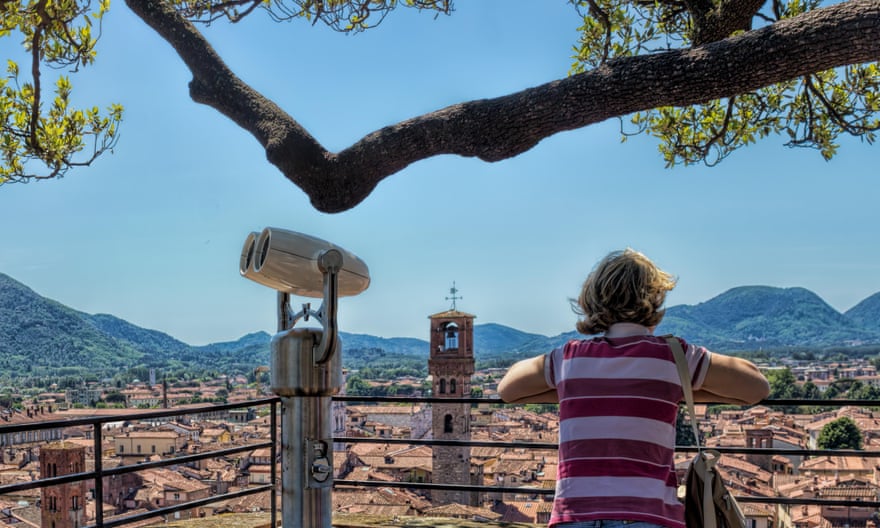
Lucca in Tuscany has deep roots and many surprises: a Roman amphitheatre morphed into a piazza of cafes and shops; city walls never breached in war, so now you can ride a bike round all 4km. The city fascinates on every visit – from holm oak trees atop the Guinigi Tower to cartoon exhibitions. The music is eclectic – daily Puccini recitals in churches or international rock stars playing the city squares or walls. Its labyrinth of medieval streets recall the past, but it has the ability to change its face, maybe as a result of outwitting competing Italian medieval city states to stay independent.
Rosie Edwards
Melilla, Spain/North Africa

Melilla, the Spanish enclave on Morocco’s northern coast, is a relic of Spain’s colonial past with a character determined by its geography. Facing the Mediterranean on one side and the Rif mountains on the other, and hemmed in by a terrifying border fence, it is definitively multicultural, with Christian, Muslim, Jewish and Hindu communities living side by side with a large force of Spanish legionnaires. The cityscape is equally diverse: streets of small Moroccan houses give way to wide avenues lined with art deco marvels; it’s even home to Africa’s only genuine gothic church. Weird really doesn’t come close.
Digby Warde-Aldam
Belgrade, Serbia
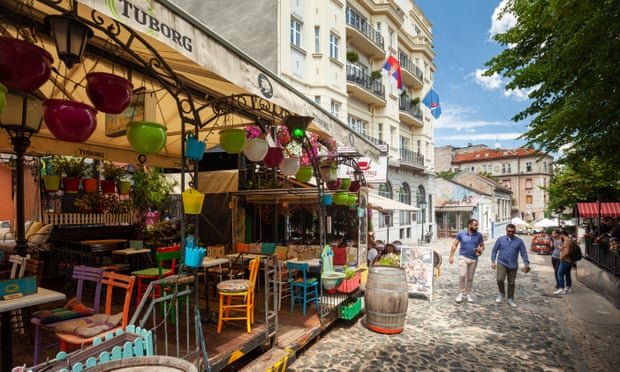
We have just returned from Belgrade – unlike any other European capital and an unexpected pleasure, from the flaking but charming old town perched between the Sava and the Danube, to the new town with an astonishing array of futuristic modern architecture including mind-blowing examples of concrete brutalism. Wherever we went people were unfailingly polite, straightforward and helpful. Public transport is ubiquitous and easy to use (who doesn’t like an hour and a half unlimited ride for 50p?), making the city and its unconventional attractions easy to explore. Easy to get to by plane or train, and a great base for exploring the Balkans if you have the time and energy.
William Gage
Profile
Readers’ tips: send a tip for a chance to win a £200 voucher for a Sawday’s stay
Show
Guardian Travel readers’ tips
Every week we ask our readers for recommendations from their travels. A selection of tips will be featured online and may appear in print. To enter the latest competition visit the readers’ tips homepage
–
Plovdiv, Bulgaria

Plovdiv is charming. The beautiful Roman amphitheatre offers a backdrop of the snow-topped Rhodope mountains – we enjoyed an afternoon there, a friendly wedding photography session adding to the romance. The custodian at the Bishop’s Basilica gave us a private tour of its acres of fabulous mosaics, and everywhere the welcome was spontaneous and warm. We kept seeing trees and bushes adorned with red-and-white bracelets called “martenitsa” – we learned why when another custodian put a couple on our wrists. Martenitsa bring happiness, and Plovdiv certainly did that for us.
Bruce
Cádiz, Spain
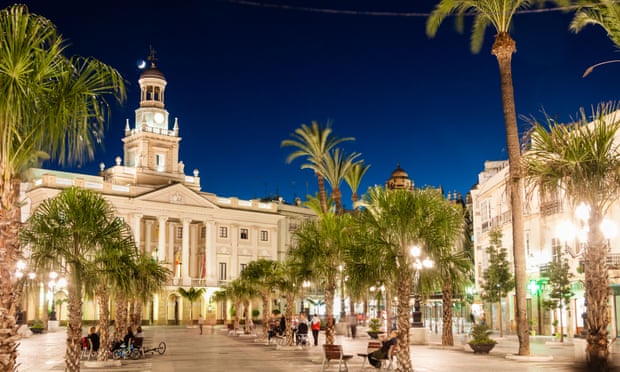
Visit Cádiz – Andalucía concentrated into a densely developed, highly photogenic old town, reputedly one of the most ancient settlements in Europe. It is full of history, flamenco, gardens and bastions, towers and plazas. The quality of food is consistently high, from a plate at the Mercado to modern high-end dining, all emphasising local produce. Outside the Land Gate is the modern city with the miles-long Playa de la Victoria and a great selection of chiringuitos, tapas bars and fish restaurants. Or take a ferry across the bay to El Puerto de Santa Maria, the nearest of the three sherry triangle towns, for a wine tasting or a visit to the three-star Aponiente or its more modest sister restaurant.
Jane McGurk
Wells, Somerset

England’s smallest city, Wells, with its gothic cathedral, is at the heart of this tiny metropolis, with its clock which is famous for its 24-hour astronomical dial set originally for jousting knights to perform every quarter hour. Pop inside Vicars’ Close, purportedly the oldest purely residential street in Europe, and admire the old Deanery herb garden. Walk through the historic gates of the penniless porch to Wells market place. And go on a film location walking tour – the city has featured in many productions, including Hot Fuzz.
Hayley Robinson
Sarajevo, Bosnia and Herzegovina
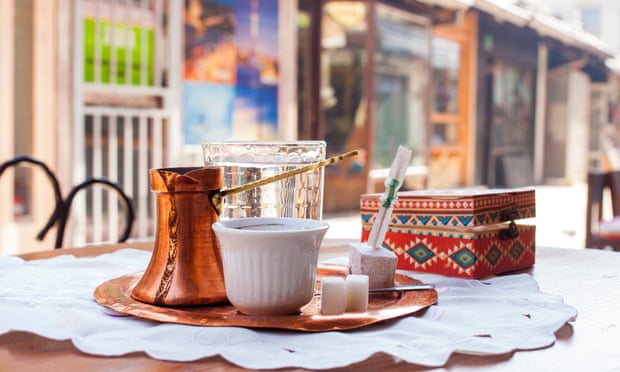
The most memorable city I’ve visited was Sarajevo, capital of Bosnia and Herzegovina and an incredibly beautiful, welcoming and culturally rich place with so much more to it than its tragic recent history. From the historic and fascinating bazaar – Baščaršija – that runs through the heart of the city, to the beautiful mountains that surround it, there is so much to see and explore. We encountered many kind people at the pavement cafes, eager to help us understand more about the hearty local food and the traditional Bosnian coffee. It’s not a city that seems to be talked about much, but it’s not like anywhere else I’ve ever been.
Rachel
WINNING TIP
Tarragona, Spain
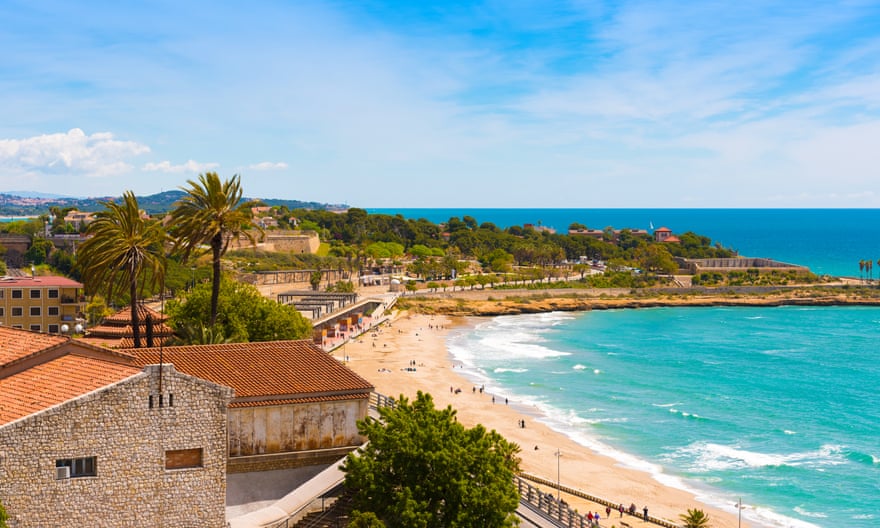
Tarragona is an hour south of Barcelona by car or train. As Barcelona’s poor cousin, in reputation and wealth, you could be forgiven for thinking it isn’t deserving of our attention. But you would be sadly mistaken. Everything is at your doorstep and most of it within walking distance: beaches for those in need of their tan fix; an old quarter to while away the afternoon drinking vermut amid the amazing Roman ruins (arguably the best in Spain); and some cheap yet exquisite bars and restaurants along la rambla. We stayed at the wonderful Hotel Pigal, in the heart of the city, in a double room with a balcony for £60 a night in July.
Nigel Maguire
Please use the comments to share details of fascinating cities that you’ve visited



